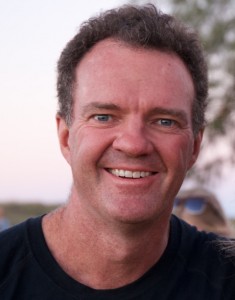Prof. Leo Donnan, Orthopaedic Surgeon

Associate Professor Leo Donnan graduated from the University of Melbourne in 1986 subsequently training in Orthopaedic Surgery obtaining his Fellowship of the College of Surgeons in 1994. Over the next few years, Leo undertook a number of international research studies such as bone formation implantable intramedullary lengthening devices and deformity correction, as well as developing medical video-based educational material for medical students and surgical trainees in paediatric orthopaedics.
On return to Melbourne he was appointed to a consultant position at The Royal Children’s, St Vincent’s and Royal Melbourne Hospitals and became Director of Orthopaedics at The Royal Children’s Hospital in 2004. Leo established the Limb Reconstruction Service at the Royal Children’s Hospital and currently hosts an International Fellowship in that field.
Leo has sub-specialist interests in correction of congenital deformities, hip dysplasia, joint replacement, neuromuscular disorders and foot and ankle surgery. In 2006 he was appointed Chief of Surgery (Executive Director Surgical Services) at The Royal Children’s Hospital and was made Clinical Associate Professor University of Melbourne.
Leo, it’s evident that you make a difference to the outcomes of the lives of children. What in particular interested you in paediatric orthopaedics?
I started a career in paediatric orthopaedics because I was fortunate enough to work for some of the great surgeons who showed me that in no other area of orthopaedics could you make such a significant impact on the total development of an individual. I was attracted to the field as I enjoy working with families, thrive on being intellectually challenged every day and wanted to find answers to the myriad of unanswered questions in the highly complex world of limb reconstruction.
Have there been advances in the type of surgeries over the past decade and if so how do they support your patients’ outcomes?
Paediatric Orthopaedics has transformed over the last two decades into a dynamic area of surgery with a clear focus on meaningful patient outcomes. We use some of the most advanced technology in diagnostic imaging, gait analysis, molecular genetics and neurophysiology. Our surgical techniques are continually improving, implants and external devices developing and rehabilitation programs expanding.
What advances in medicine and technology do you anticipate in the next few decades, and how will this impact the amputee community?
Over the next few decades there will be exponential development in surgical implants that react with the body, 3D printing of body parts and the prospect of useful stem cell therapies coming online. This will offer greater options to the amputee community in prosthetic integration, replacement of body parts and the biological manipulation of the limbs in the form of growth and function.
What are your recommendations or suggestions to the new parents you meet? For example those who have either given birth to a child with a congenital limb deficiency or whose child is about to undergo an amputation?
For most parents, for whom a prenatal diagnosis is made, they are concerned about what will their child look like and how will they function. Within a few days of birth the worry usually turns to the ability to walk and play and less about the look of the limb. I always make sure parents understand that their child with a limb deficiency knows no different and will adapt to the problem in the most amazing ways without any instruction. All children with a lower limb deficiency will walk – without exception. Play and desire are very strong motivators. I strongly suggest that they meet with other parents with children with similar problems and at different ages but make sure that they know that every child is different and that the treatment offered may vary. I believe that in the decision making for treatment, be it prosthetic or reconstructive , that we all agree that no matter what we do the utmost to preserve childhood (education, play, sport, social life) as the child only have one shot at it and this is what produces the person that goes on in life.
How can parent’s best prepare their children for an amputation or a reconstructive limb surgery?
Amputation can be discussed with any child of any age and it should be done in a way that is age and maturity appropriate. Children should see other children who are functioning well, the hospital stay described and even a pre-admission with a visit to the ward arranged. They should meet the prosthetic team and be given a chance to voice their opinion. It is always distressing to me when parents do not want amputation discussed with their child before the surgery as this sets up mistrust, fear and usually makes the recovery longer and pain is more of an issue.
From your experience what aspects of support do you think is most beneficial to parents who are dealing with their child’s limb loss or congenital limb deficiency?
Truth with careful explanation and, most importantly, look at the whole child and all that they represent as no one is defined by a missing body part.
Associate Professor Leo T. Donnan, M.B.B.S. (Melb), F.R.A.C.S., FAOrthA
Senior Orthopaedic Surgeon
The Royal Children’s Hospital, Melbourne
